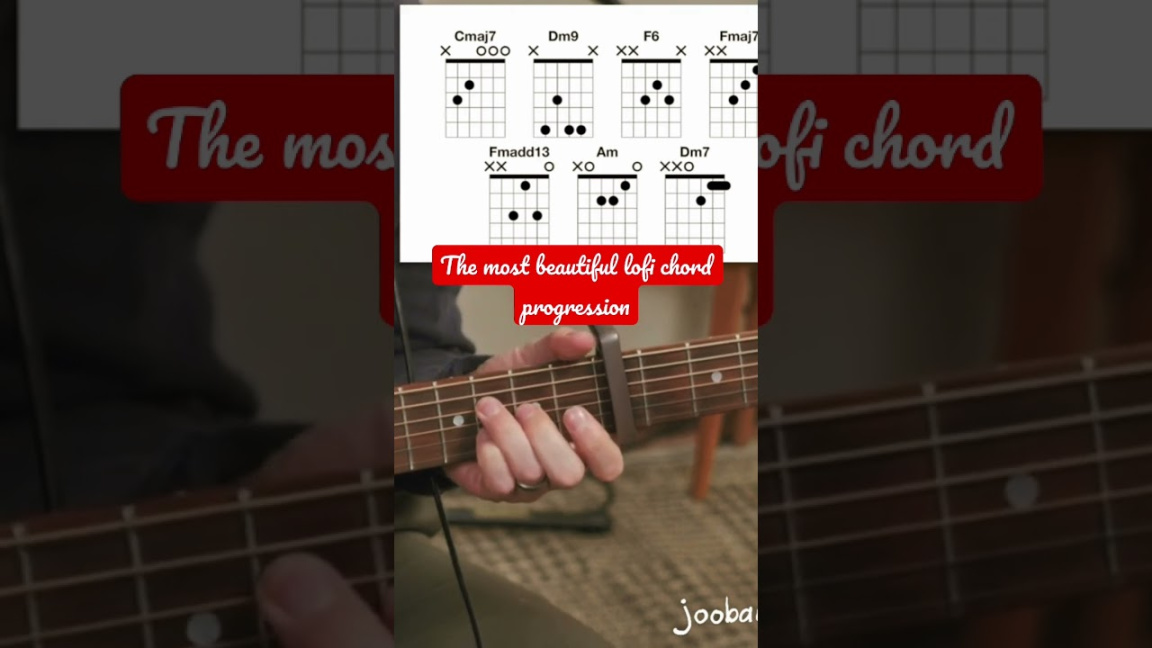Crafting Dreamy Soundscapes: Lo-Fi Guitar Chord Progressions
Lo-Fi music, with its warm, slightly imperfect sound, has taken the internet by storm. And at the heart of many Lo-Fi tracks lies the humble guitar, weaving simple yet captivating chord progressions. It’s not about flashy solos or complex riffs; it’s about creating a mood, a sonic backdrop for late-night study sessions, lazy afternoons, or just pure, unadulterated relaxation.
So, what makes a chord progression “Lo-Fi”? It’s often about simplicity and repetition. Think of those classic jazz and soul progressions, but with a laid-back, almost hazy feel. We’re talking about chords that create a sense of nostalgia, comfort, and a touch of melancholy.
Understanding the Lo-Fi Vibe

Before we jump into specific progressions, let’s talk about the vibe we’re aiming for. Lo-Fi is all about:
Warmth: Think warm, mellow tones. Avoid anything too bright or sharp.
Common Lo-Fi Chord Progressions
Now, let’s get into the chords. Here are some classic progressions that work beautifully in Lo-Fi:
The Classic I-vi-IV-V Progression
This is a staple in countless genres, and it works wonders in Lo-Fi. In the key of C major, this would be:
The added sevenths create a smooth, jazzy feel. Try experimenting with different voicings and adding a touch of reverb and delay for that signature Lo-Fi sound.
The Soulful ii-V-I Progression
Another jazz-influenced progression, this one has a soulful, melancholic vibe. In the key of C major, this becomes:
This progression is often used in Lo-Fi hip-hop and chillhop tracks. The minor ii chord adds a touch of sadness, while the V-I resolution provides a sense of resolution.
The Relaxing I-V-vi-IV Progression
This progression is known for its calming, relaxing feel. In the key of C major, it looks like:
This progression is often used to create a sense of nostalgia and comfort. It’s perfect for those late-night study sessions or lazy afternoons.
The Jazzy I-vi-ii-V Progression
This progression adds a bit more jazz flavor. In the key of C major, this would be:
This progression is known for its smooth, sophisticated sound. It’s perfect for creating a more upscale Lo-Fi vibe.
Experimenting with Chord Voicings and Inversions
To really capture the Lo-Fi vibe, experiment with different chord voicings and inversions. Try using open chords, adding sevenths and ninths, and playing around with the order of the notes in the chords. This can add depth and complexity to your progressions without making them sound too busy.
Adding Effects
Effects are crucial in Lo-Fi. Reverb, delay, chorus, and tape saturation can all help to create that warm, hazy sound. Experiment with different combinations of effects to find your own unique Lo-Fi sound.
The importance of Rhythm
Lo-Fi is often about a relaxed, laid-back rhythm. Try playing your chord progressions with a simple, steady strumming pattern. Avoid anything too fast or complex. Let the chords breathe and create a sense of space.
Lo-Fi and its connection to Nostalgia
A large portion of the Lo-Fi soundscape is built upon the feeling of nostalgia. The use of older recording equipment, samples, and the overall warm tone of the music lends itself to remembering a time that may or may not have existed. This connection to the past is a major component of the genre’s appeal.
The power of simplicity
In a world filled with complex music and over-the-top productions, Lo-Fi offers a refreshing simplicity. The focus is on creating a mood and atmosphere, rather than showcasing technical skill. This simplicity is a key part of the genre’s appeal.
Conclusion
Creating Lo-Fi guitar chord progressions is all about simplicity, warmth, and emotion. Don’t be afraid to experiment with different chords, voicings, and effects. Let your creativity flow and create your own unique Lo-Fi soundscapes. By understanding the core elements of the genre, and using these chord progressions as a starting point, you can craft compelling and relaxing music that resonates with listeners. Remember, the goal is to create a vibe, a mood, a sonic escape from the everyday. So, grab your guitar, find a comfortable spot, and let the mellow sounds of Lo-Fi take you away.

